Vincents passion for pipe smoking
Author:
Benedict Goes
Original Title:
Vincents passie voor pijproken
Publication Year:
2015
Publisher:
Amsterdam Pipe Museum (Stichting Pijpenkabinet)
Vincent and the clay pipe
Vincent van Gogh has made numerous self-portraits, both drawings and paintings. In many cases, this did not happen out of vanity, but in the absence of models who wanted to pose for him and which Vincent would have to pay. Making a self-portrait is easy, you put down a mirror and there is the model. You can practice in peace without the person posing getting impatient. Vincent smokes a pipe in six of his self-portraits. All these portraits date from the time he lived in France, the years 1886 to 1889. The self-portraits originated in his later period and were strongly influenced by the impressionist painters of his time. Yet Vincent van Gogh can always be recognized in his portraits by his reddish moustache and beard. Initially, he spent a short time in Paris with his brother Theo, but soon travelled to southern Provence with a stay in Arles and later Auvers. From that time we see him twice with a big straw hat.
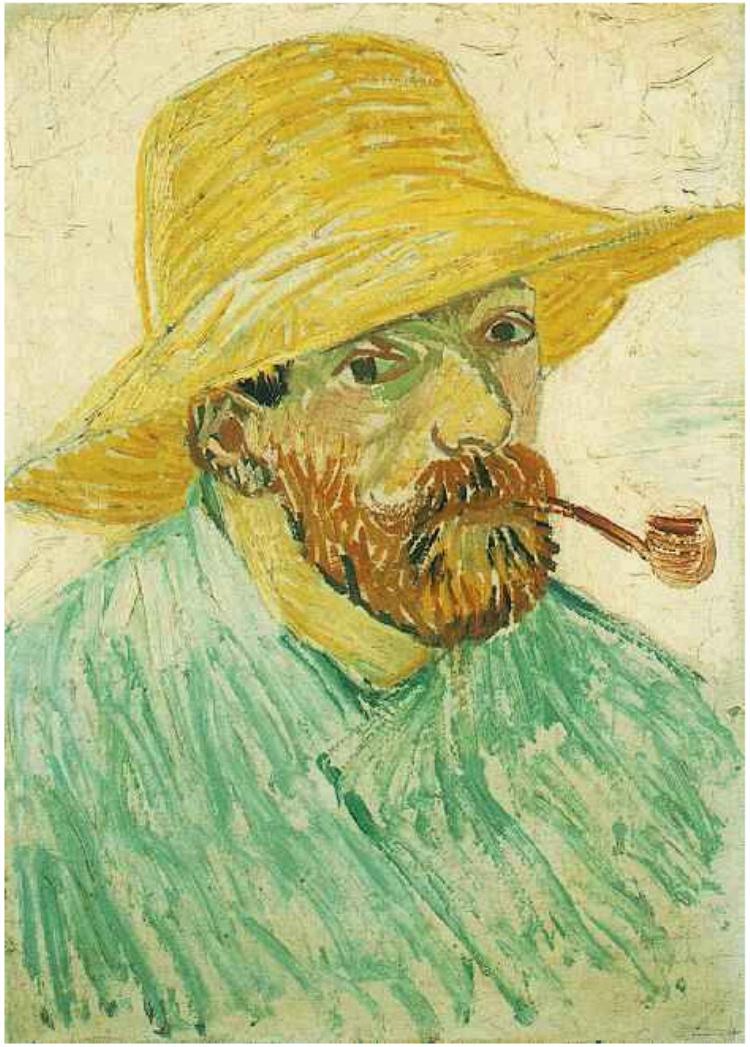
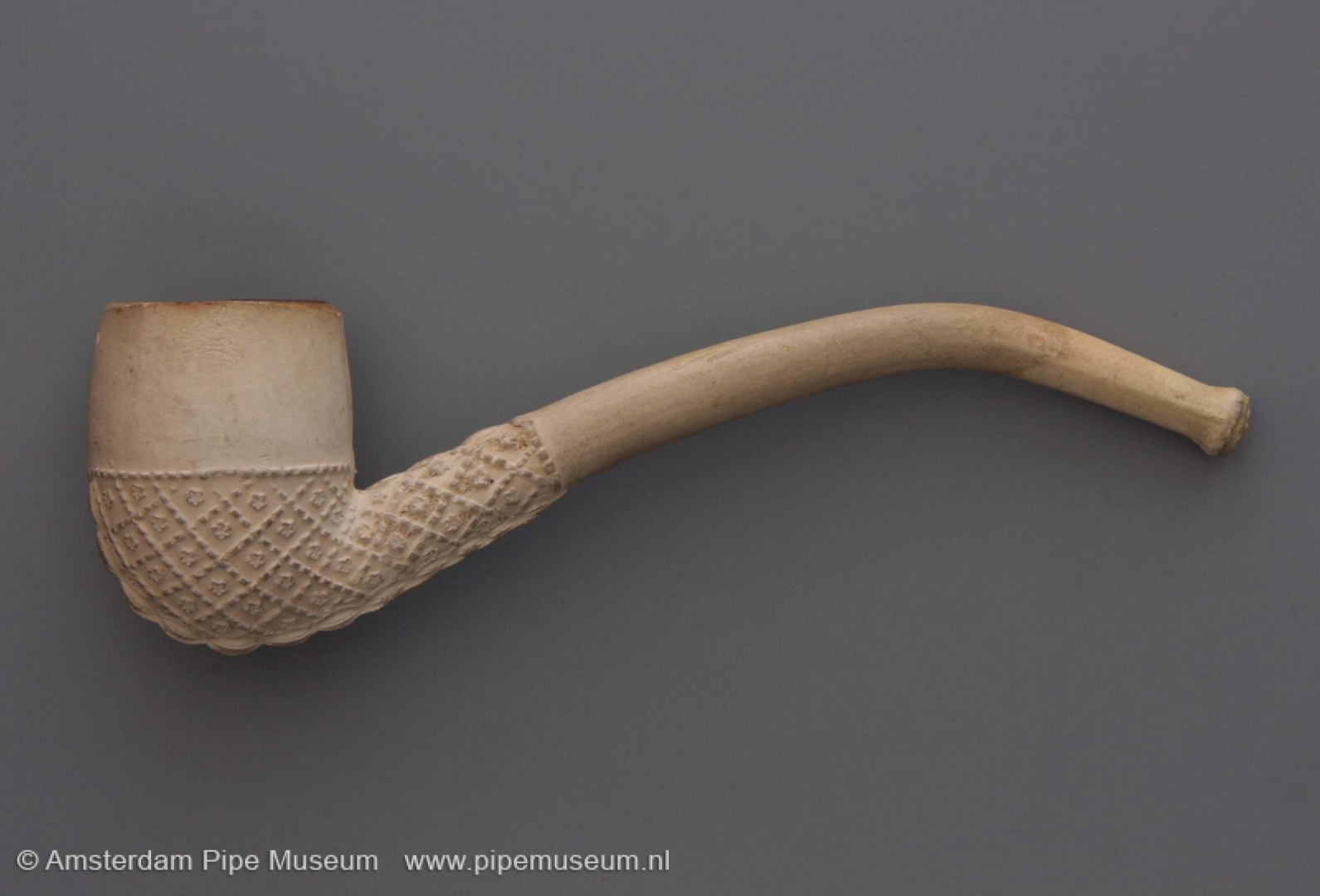
From the theme of smoking, the self-portrait with straw hat is an interesting image, made in 1885 (Fig. 28). The pipe is painted in such an impressionistic way that it gives room for speculation. Given the sunny appearance of the portrait not only because of the bright colours, but also because of the straw hat, it is quite possible that a clay pipe is depicted. Not such a copy that he knew from Brabant, but the modern interpretation that arose under French influence. The stem is short, slightly bent and the pipe bowl stands upright and has an adapted shape (Fig. 29). It is a simple pipe fitting in the 1880s. The painting also shows clearly, although impressionistically, that it is a decorated pipe.
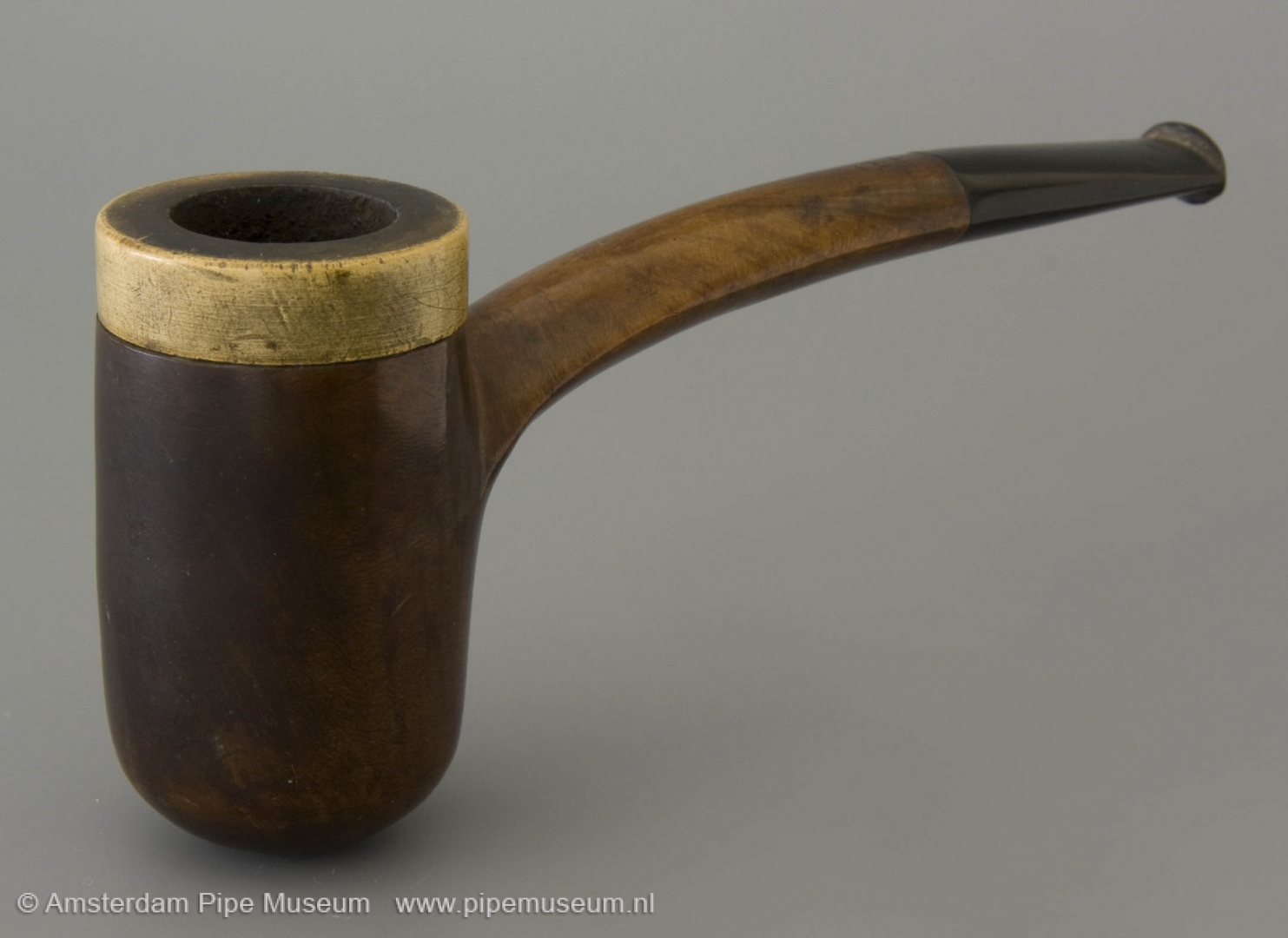
In the past it has been claimed that this is a completely different pipe. It would be a wooden pipe, where the whiter-looking top edge of the pipe bowl would indicate a meerschaum bowl insert. Some examples of this have been preserved. The picture shows a beautiful example of briar wood with an insert of meerschaum that protrudes slightly above the wood (Fig. 30). The meerschaum absorbs very well the moisture of the tobacco, a pleasant quality for the smoker. Meerschaum is naturally bright white and turns tobacco colour when smoked. What does not support this attribution is that such a wooden pipe is a bit too chic for Van Gogh. Then it would also be a pipe purchased in Paris, according to the fashion of the day. At that time, such pipes were hardly available in the province. Today, this pipe has acquired the reputation of being the pipe of Vincent van Gogh among collectors.
Love for cherry wood pipes
In France, Vincent van Gogh switches to other types of pipes. The nineteenth century French smoker paid more attention to his smoking equipment than the Dutchman. When Vincent was still living in Brabant and Belgium, he had to rely on the clay pipes that were for sale there. A clay pipe is fragile as it is and will not last long. Vincent therefore bought new clay pipes in France, the example on the chair and on a still life was already discussed. Incidentally, it should be noted that the French clay pipes smoked better than the Dutch ones. They had a more porous shard and gave a soft taste due to the cooling effect of the absorbent clay.
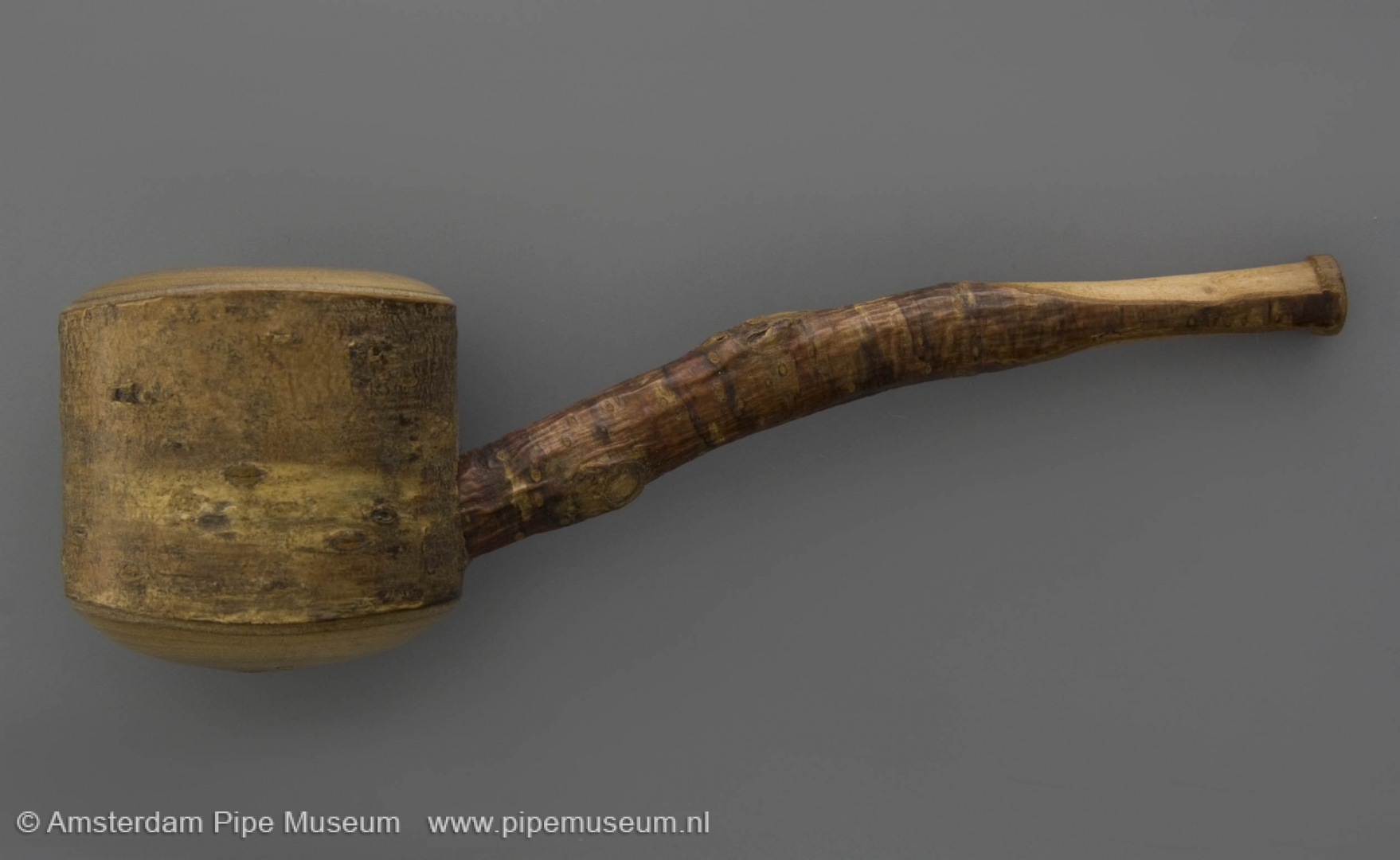
In addition, a new type of pipe was also on the market in France for a number of years, which Vincent immediately tried out. It concerns the mérisier or cherry wood pipe (Fig. 31), a type of wood that is referred to in Germany as Weichsel. Cherry wood is recognizable by the flamed bark that remains visible around the pipe. In fact, a cherry wood pipe is no more than a piece of a thick branch, hollowed out from above for the tobacco. At the bottom on the side, a hole is drilled into which a thinner branch of the cherry is inserted that functions as a pipe stem. Cherry wood is easy to pierce because of the soft core. The bark is cut from the mouthpiece to give a better grip between the teeth.
In comparison to the clay pipe, the cherry wood pipe is quite durable, although it does not last forever. After all, it remains wood, so eventually the pipe will burn out. While smoking, the cherry wood gives a slightly sweet taste, which makes the pipe tobacco extra pleasant in flavour.

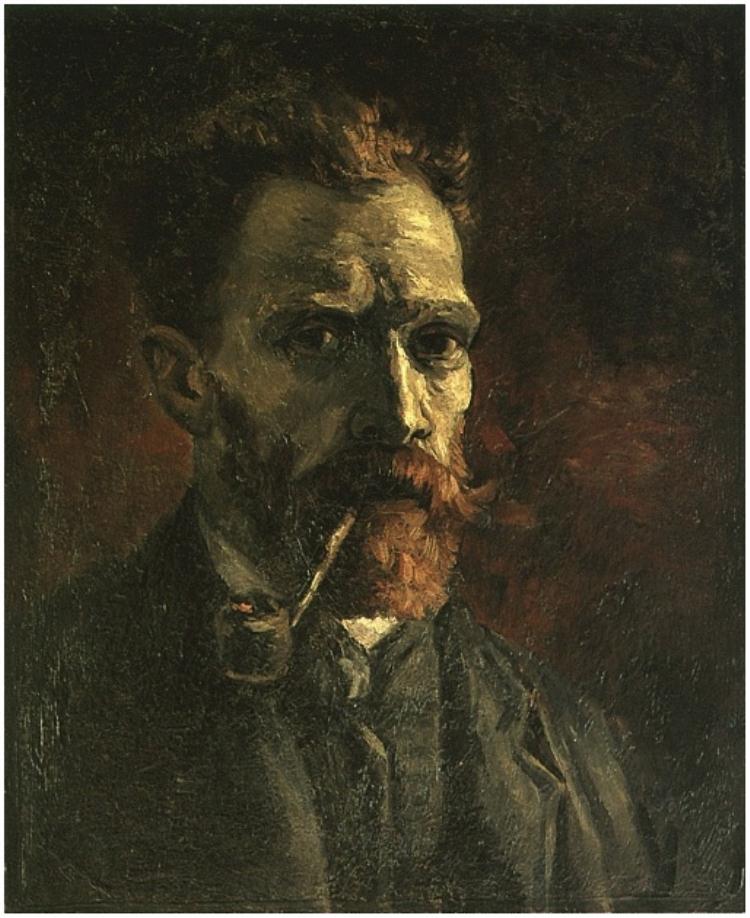
The self-portrait with blue smock and yellow summer hat from 1887 shows such a pipe and clearly illustrates that the pipe stem does not form a unity with the pipe bowl, but is mounted just above the bottom (Fig. 32). The white wood of the stem, where the bark has been cut away, is also clearly recognizable. In the self-portrait of 1886 where Vincent wears his neat grey suit with vest, the light flames in the bark are easily confused with the crackle of the paint (Fig. 33). Yet this is also unmistakably a cherry wood pipe.
In addition to cherry wood, experiments were carried out with all kinds of other types of wood during that period. In another self-portrait we see that Vincent holds between the teeth a mounted pipe between whey and hardwood (Fig. 34). The pipe has a convex bowl and is mounted with a loose stem with mouthpiece. This mouthpiece is probably made of buffalo horn, a wear-resistant material that had been used for pipe stems for generations. It is not clear how close the pipe shown here is equal to the example from the painting (Fig. 35). That is obscured by the impressionistic way of painting.
The sophisticated briar pipe
In the same period that the cherry wood pipe became popular, the briar pipe came into circulation. The briar plant is a man-sized heather that grows wild along the Mediterranean Sea and is known in France as bruyère. The root of this plant is virtually incombustible. The bush is cut down and the root stump is dug out. This tuberous root is sawn into cubes from which a pipe bowl can be turned with a mechanical drill and cutter. A hard rubber or horn mouthpiece completes the whole into a usable tobacco pipe.
Going with the flow of the time, Vincent van Gogh is switching to this much more luxurious briar pipe. We can notice that in the self-portraits from 1887 (Fig. 36). The bowl and stem of the pipe sometimes looks like a unity, but that is not the case. The pipe bowl has a short stem part named tige, which is mounted with a separate vulcanized rubber or horn mouthpiece (Fig. 37). Sometimes a metal ferrule is used for mounting, which provides more strength. In the reported portrait, another detail is visible, namely a spark catcher that covers the pipe bowl.
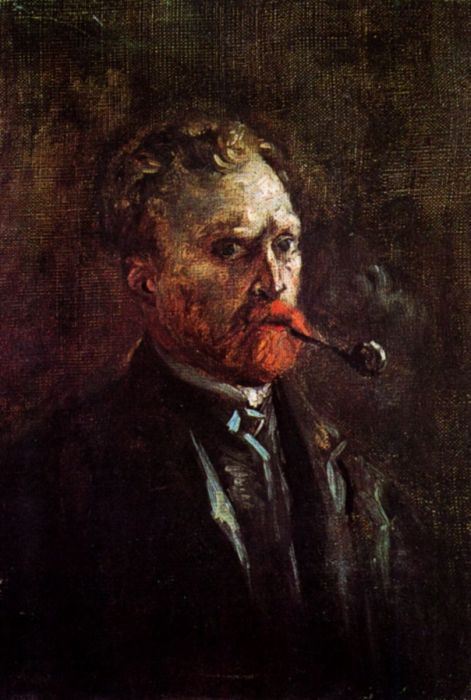

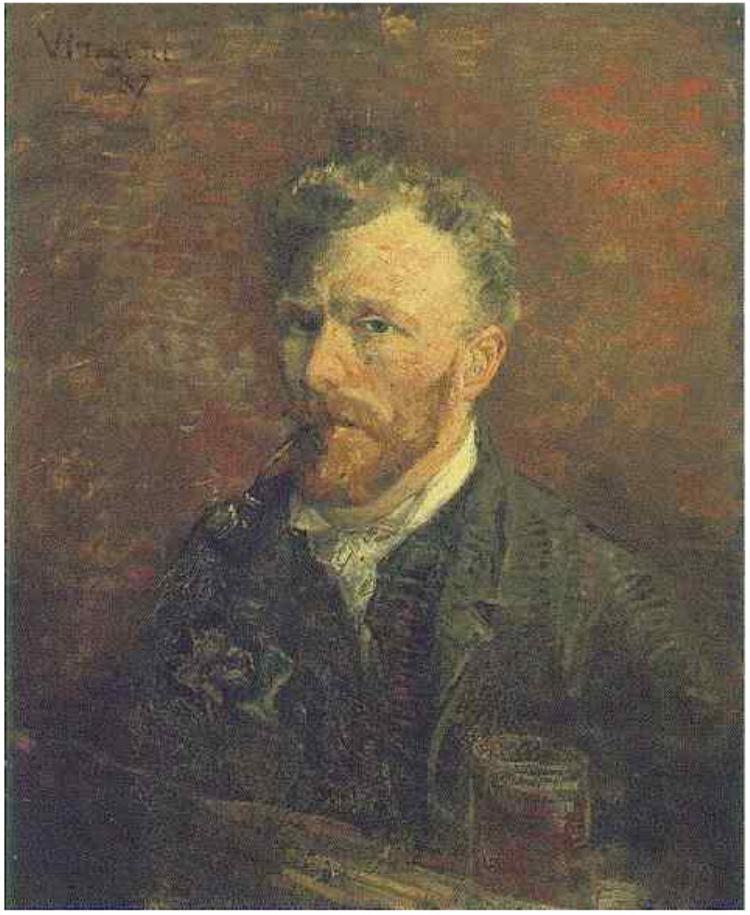
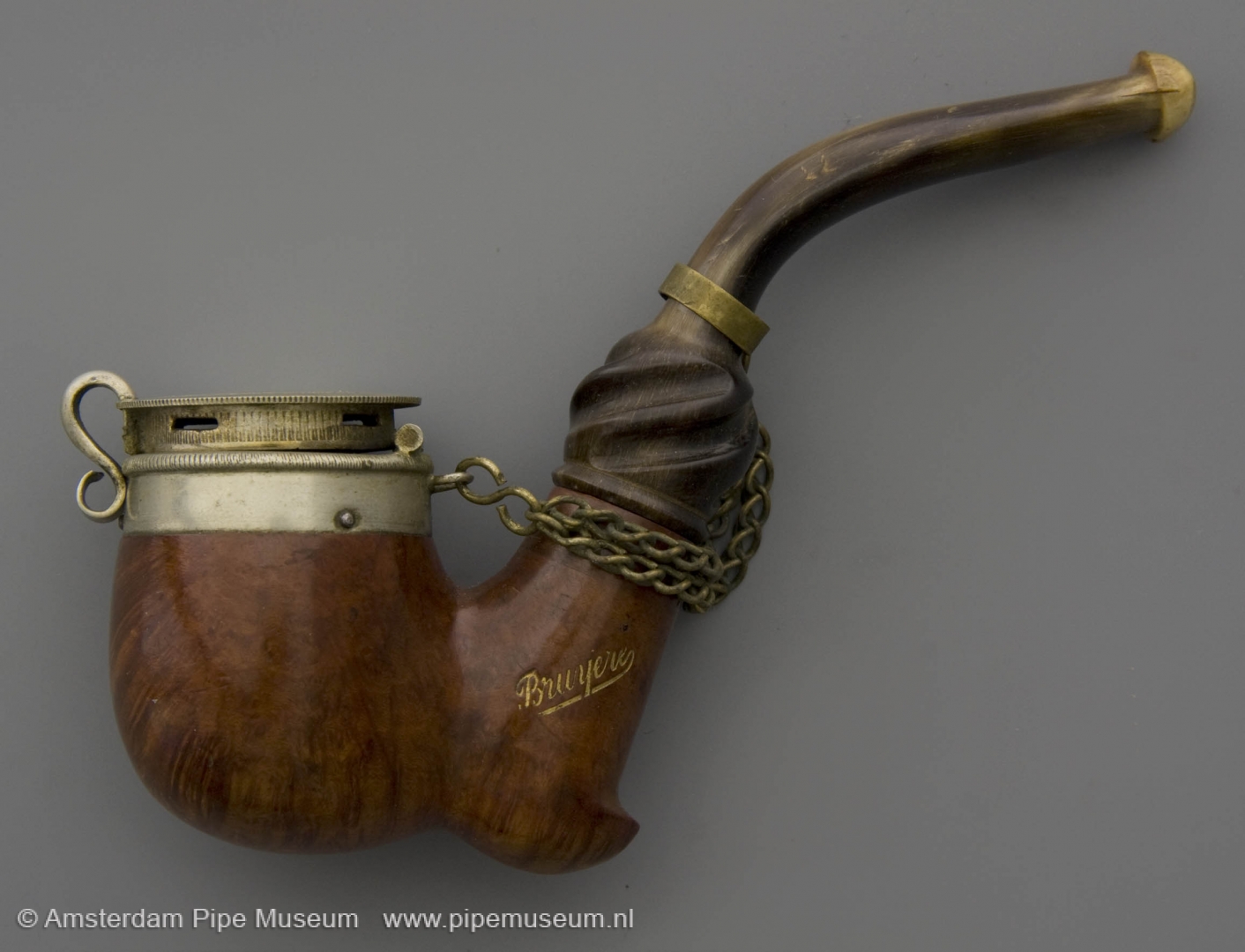
With this pipe, Vincent was contemporary, fashionable and he distinguished himself from many smokers who could not afford such a tobacco pipe. We can expect a painter to pay attention to his smoking attribute because it was characteristic of artists that they stood out with their smoking equipment. In that sense, Vincent is no different from his art brothers, although it was no imitation for him because his passion for pipe smoking is genuine.
Vincent shaved his beard in his last self-portrait, which immediately makes him look a lot older (Fig. 38). This most recent portrait is especially famous because he portrays himself with the bandage over his cut ear, the result of an argument with his friend and colleague Paul Gauguin in October 1888. Incidentally, the portrait dates from the early 1889 when he was still bandaged. Despite his injury, Vincent smokes his pipe happily. Here we see the most clear briar pipe, even showing the wood grain structure of the pipe bowl. A beautifully profiled metal ferrule reinforces the stem where it merges into the black rubber, or as the French say caoutchouc mouthpiece. That pipe shape is a favourite in the 1880s, but finding it nowadays is not that easy. The one shown here is the same in terms of shape, but does not have the metal fitting (Fig. 39).